


© 2014-2021 Copyright by P. K. H. Groth, Denver, Colorado, USA All rights reserved - See contact page for for permission to republish article
excerpts.
Become Acclimated Before the Hunt: What are the best thing you can do before going on a Colorado high-altitude
mountain hunt? Get your body physically in shape well before the hunting season. Then come a few days early to get
used to the high altitude and less oxygen. Ask your outfitter or guide to recommend places to stay. Nearly all the
2012 second season clients at Trappers Lake Lodge and cabins bagged an elk. I have to wonder if many of them had
arrived a few days early to relax, acclimate and soak in the magnificent scenery. You will be more successful when
rested and adjusted. www.Trappperslake.com, email info@trapperslake.com)
Busted Hands:Jim rode over with a personal problem – his hands. They were a wreck of honeycombed fissures, some bleeding. He had brought some simple hand lotion, but that was no match for the rough camp work, working in snow and the cold. His thumbs in particular were in trouble. Deep cracks formed where the nails met the fingertip flesh. (This is a common cold weather condition, especially for older people who have aging skin.) Two horsemen also came by. They got their elk and were taking a long trip to town for a shower and supplies. Like true sportsmen, they spent an hour scouring for thick, fragrance-free Eucerin hand cream I asked them to buy for Jim. They would not take payment, saying that they too had learned from the incident! In two days Jim’s hands were recovering. The photo shows some small tubes of essentials I recommend for remote cold weather hunting. The tiny tubes of super glue are to fill in the cuticle on the sides of thumbs, preferably before they desiccate and crack. Wiping your butt with snow, sitting long periods, or unfamiliar camp water and foods can irritate your posterior, for which the anti-itch triple ointment is a savior. Use chemically non-basic castile-based biosoap for hand AND DISH WASHING. I recommend Dr. Bronner’s “super mild 18-in-one baby castile, FRAGRANCE-FREE” soap. This soap is potassium based and dries skin less than sodium and lye based soaps. (Note the small bottle I’ve filled for convenience, and to carry in my day pack to clean up after a kill. The orange duct tape allows you to find it in the grass and snow.) Simple eye drops can ease eyes strained by squinting on bright days. The drops keep eyes moist at night and induce deeper sleep. Aquaphor is an unfragranced moisturizer ointment that allows lips to rejuvenate at night better than lip balm. Do not use camphor or scented lip balm; you cannot smell elk if your olfactory nerves are numbed or overwhelmed with chemicals or fragrances. The disposable shower cap keeps your hat and head dry if a wet snow occurs, or warm if a stiff wind blows though a knitted cap. Use Preconditioned Camp Gloves: . Bring a second pair of gloves to use only in camp. Wear them when doing camp chores, especially when setting up tents. Dirt and dust can quickly dry skin, especially if you are not a tradesman with work hardened thick skin. Buy reasonable quality leather gloves. Some inexpensive gloves have rough, coarse inner leather which leaches moisture from skin, or a cotton liner that stays wet long and the dampness will soften and leach natural oils from your hands. Both exacerbate hand chapping. Use some nonfragrant hand lotion on finger tips and palms prior to using new gloves to reduce the leather drying effects on hand skin. Don’t Wash Pots, Pans and Dishes: We initially used a Svea spirit stove set and sometimes got lazy after dinner. The pots got only sloshed out, put in the cold and reused the next day. That ended when acidic spaghetti sauce etched pin holes through the expensive pure aluminum pots. With insight we improvised to make dish washing obsolete.Thin disposable aluminum pie plates and cake pans proved to be a weary hunter’s godsend. They weigh almost nothing, nestle together for transport, can be used for cooking or as a serving plate. One plate can be used as a lid. Now only one pot is needed to make hot coffee and tea water. Eat right from the pie plate.Hold a wool cap under the plate to keep food warm longer. Warm the plates on the stove after dinner to dry them, then stack them for transport out (horrors – do not leave never-decay aluminum wonders in the backcountry). We pick up stacks of these plates at spring garage sales for pennies to use when hunting, in our antelope hunting cabin, and in our rambling sheep camp wagon.Use paper hot cups for soup, coffee and instant oatmeal breakfasts. Leave them separated to dry under the tent fly. Burn them. Days End Wash Up: Bring a flexible rectangular polypropylene wash tub with a snap-on cover that will fit in your backpack. Do not use polystyrene, because it will crack in the cold. Pack your delicate things in the tub. The tub will provide a quick, refreshing face wash in the evening. Getting rid of the sweat salt greatly increases the likelihood of a good night's sleep. Garbage Bag Water Heater: Keeping water unfrozen is a problem. It is impossible to get frozen water out of jerry cans and bottles. Bring a couple of black 33 gallon garbage bags. Place water containers in one bag in a place where noon to afternoon sun will shine on it. Crumple the second bag and place inside the first bag on the eastern side of the water containers to act as an afternoon heat loss insulator. Lighty tie off the bag top. This solar heating will prevent or reduce freezing of the water. Tent Doormats: An extra polyesther towel inside the tent door is a good way to keep the tent dry and clean of mud. Place boots on it to catch dripping water. Gather pine cones to place outside the tent door. These will prevent a quagmire from forming at the heavily used tent entry. Do not use pine branches; it is illegal in National Forests. A Drag and Comfort Bag: A coated nylon bag large enough to hold a bull hindquarter can be used to drag quarters out of a field, or even along the trail home. Mine has been used by volunteer horsemen to drag game to the trail head for me. We've also tied the bag in the center so volunteer horse people can drape the bag over the saddle horn.Turn the bag inside out for snow travel; the coating eases sliding and prevents icing up. It makes a great garbage transport container at the end of the hunt. Carry the bag in your day pack. The bag can be used for creature comfort. Sit on it to prevent your butt from getting wet. Place it over your legs for warmth, or to deflect drops from dripping branches. Put your booted legs into it as a chill reducer when you sit, especially when the wind kicks up at dawn or dusk. (I make our bags, but include a photo of a Post Office surplus mail bag purchased at a garage sale for a dollar.) A drag bag can also be used to hang your hunting clothin g outside at night so the cooking and tent interior fumes will not saturate them. Sprawling on it at lunch time prevents your clothing from getting full of stickers, pine needles and grass stubs. Leave your boots in the bag outside the tent to avoid snow from blowing into them, and the snow- covered boots from melting in the tent. Get caught in a rain, and you can keep your pack and gun dry with the bag. If bears become a problem, the bag can be hoisted up on a tree branch and keep food dry. Lay butchering instruments on the bag beside the kill to avoid loosing them in the grass or snow. A coated, scent-free bag can may be accepted by a horseman volunteers to take your garbage out to your vehicle; it can be tied at the end and in the middle so it can be draped over a saddle horn. Horsemen with pack animals are more likely to offer to take out a heavy hind quarter if it is in a sealed bag that will not gore-soil their panniers. Trade the bag with another hunter who is less prepared for something you need. Lastly, leaving a remote camp in a hurry in bad weather usually involves finding a lot of miscellaneous small items at the last moment. Dump them in the bag and they will not get lost. I also use my drag bag as an easily erected blind. Shoe strings sewn to the sides permit me to hang it from a roppe or log. Place a long pole or pine cones in it to prevent breezes from moving the blind. Plan your back country exit. The tent was abandoned and this is what it looked like the next summer. No bears, just snow loads devastated the supply tent. Normally, I would have burned the garage sale supply tent, plastic milk jugs and foam pads and brought out the remaining melted glob and poles. However, the wet tent unburnable without using fuel. Fuel burning was inadviseable because of the pre-storm winds. The increasing snow storm urged little tardiness in leaving before I was the last person remaining in the wilderness. Consider a Pannier Sized Transport Bag: I've made some large transport bags now that I use for outfitter horse Sherpa Service. The bags allow me to compactly pack small items to save space, and to protect fragile items.The bags slip down into standard horse panniers. This expedites loading and greatly decreases wranglers exasperation. But the most important asset is that the bags eliminate cargo shifting and the loss of small items along the trail. (Lost a sleeping pad that way years ago.) The two equal sized bags I constructed have a finished size of: Width 26 inches, depth 14 inches, and height of 16 inches. They are made of heavy waterproofed (inside coating) Cordova nylon cloth with heavy duty zippers. Seams and sewing threads are sealed with tent seam sealer. Hand holds are on each end, there is a snap buckle strap around the bag (for outfitter weighing to load balance), and I cinch the bags with rope to keep them compac and prevent the contents from shifting. I place sleeping pads and other soft items against the back This prevents irritation to the pack horses, which might end in a bucking match. Note that the bag tops are different colors to avoid confusion of contents. Help from Horsemen: Over the years, we have been helped many times by mounted hunters. A secret to this help is to make it easy, safe, convenient and timely for them to help. We come prepared with a FEW heavy items prepacked in T-shirt-padded small stuff sacks. If a horseman offers to take some things up the trail, it is ready to be tied around a saddle horn. Don't expect a fellow to stop riding while you pack a bag. And never ask him to take your leaky fuel bottles (they leak as the rider gains altitude) or other smelly things. Volunteers don't want to ruin their hunt or equipment. We clearly tell the volunteer to just drop it from his horse or tie it on a tree at a clearly communicated trailside location. We have also had small but heavy meat carried out by horses, and sometimes whole quarters. Again, the meat is already blood-drained, packed, in blood-proof bags, and packed ready to go. The bones should not point inward to irritate or injure the horse. And you should have enough rope to tie on the meat. Give and you might receive help: There is another side to inducing horse people to help you. You give something first! That could be valid hunting information, location of good water or ample water for horses, and scouting tips are favorites. Naturally, we do not disclose our exact hunting sites. However, other areas we ramble around while scouting can be disclosed, especially if they can be accurately described so the hunter can find them.. Our favorite "gift" was an air photograph with the main trails marked. We would use a safety pin to prick holes where game was seen or recently taken. Nylon stuff sacks were another trade item. Use your imagination, and be polite and diplomatic. Most people want to help you if it does not cost them a lot of bother and time, or their successful hunt. Radio Help: Much of the Flat Tops Wilderness and other Colorado backcountry locations receive poor radio reception, if any. Reception worsens during storms. The stations likely to give insights into oncoming weather may be distant and poorly received. Remember, if you hunt until dark, the local stations may be on automatic program music streaming without hourly weather reports when you get back to camp. They will not have weather forecasts until morning. You can increase your radio reception by making an aluminum foil "flag" on the antenna or a supplemental wire antenna extension strung within your tent. (Yes Dad, I know it is an old trick, but the post- Drink Hot Gaterade: Traipsing the high country can leave you worn out and not up to day's end camp chores. Try some HOT Gaterade when you return to camp. The quickly absorbed electrolytes and sugar can almost instantly perk you up. Get Old Betsy Ready for Hunting Hunting is not going to be very successful nor enjoyable if you arrive late, exhausted or not at all. By August you should have given your huntmobile an exhaustive inspection. Churning up mountain roads and busting snow in low gears will tax your cooling system. Replace your old thermostat and any soft water AND heater hoses. Does the heater work? Defroster? Clean the radiator internally, and externally of summers bugs. Do you have a pre-radiator gravel guard screen (mounted in front (not against)) the radiator? Check the differential and transmission fluids. Replace sun rotted wiper blades. Check the spare tire inflation pressure. Do you have good chains that fit your new (larger?) tires. Chain replacement links/ cross links? Have a bow saw? There have been times when wind toppled trees blocked entry roads - or worse yet, exit roads. Busted Tires: Some of the dirt and gravel roads are really hard on tires, especially if you drive fast. Washboarding can delaminate tires, and punctures are frequent, especially on lightly strutted bouncing trailers. Bring two spare trailer wheels/tires. Also bring a 12 volt tire air compressor. Keep the compressor inside the truck cab/vehicle. A cold compressor's piston rubber rings may contract and compression may be bad. I recommend you convert a cigarette lighter power cord to a battery terminal cord. Compressors draw heavy amperage which may blow many fuses, perhaps more than you have. Over heating the cigarette wiring may also cause adjacent wiring insulation to melt and cause real problems. . Bring FRESH tire plugs and a SEALED new tube of rubber cement. Cold tires are hard to plug and seal without the rubber cement as lubrication. Note: the self-sealing "slime" type air inflation canisters may not work in very cold weather.The propellant may not expand enough to inflate high-pressure truck tires. Candles for Tent and Sleeping Comfort:Burn a candle or two in a safe place at night to keep warmer. The candles do not provide much heat, but they will provide air circulation. Circulation is very important to redistribute water vapor away from your sleeping bag. Humans can perspire a pint to a quart of water over night. This water must travel through your sleeping bag and must be removed from the tent atmosphere. A moisture-saturated sleeping bag and perspiration laden clothing will make you feel much colder than if you were dry. Air circulation created by a candle is upward. Moisture is wafted up and condenses on the tent ceiling (or travels through an inner breathing tent to the rainfly). This lowers the humidity inside the tent. Condensation on your sleeping bag is reduced. You will feel warmer if the air is drier.This is a photograph of the Emerald Room in Quebec, Canada's famo us Hotel de Glace (Hotel of Ice). The hotel, furniture and all contents are made of ice and ice-snow. The 45 rooms are "heated" with two candles per room. This is wonderfully comfortable with the arctic provided arctic sleeping bag. Sleeping here is a "hoot" and a refuge from the subzero outside weather. Don't Bring a Snow Shovel, but A Plastic Tray or Aluminum Pizza Pan: Getting out of the sack on a snowy windy night to clear snow from the tent can be hazardous to your tent if you use a snow shovel. A shovel has corners which can snag the canvas and rip it. They also hang up on tent guy lines. Tent damage is not wanted, especially when the wind howls. A FLEXABLE rounded tray held by a gloved hand is more controllable and won't rip the tent. It can fling a lot of snow in a short time, since you will not have to fiddle trying to be careful with the tent. The tray can be used to hold meals, hot pans (on a hat or rag), or as a night time depository of all the stuff in your pockets. And trays have no handles like shovels and are easy to pack. You might have to pay all of a dollar for one at a Goodwill store. Bring a Plastic Sled, Save a Back and Make Life Easier Pictured are four plastic sleds. You find them at June garage sales for a couple of dollars. They can be a wonderful elk camp asset. Sleds do the job of moving things without lifting. You might be surprised at the incidence of hunter back and heart problems. Sleds can be used to haul in/out camp, dragging game quarters to shady hanging trees, sitting in at muddy camp sites, as a wind break for stoves, and escaping the back country after a blizzard. They serve as a night time weather cover for back packs, to stand in when changing clothing and even as a sitz bath for bathing. The best use is for hauling water. I can drag home a week's water (ten gallons) in the square sled from a spring and never have interrupt hunting and to do that chore again. The blue one is too shallow and rigid; it does not flex over trail rocks and it tips over. The long upper black sled is ideal for long hauls on trails; I've used two tied in tandem. My favorite is the square one. It acts as a rain and night time cover to my outside stored equipment. It can be strapped over my pack where it does not become a flappng nuisance in the wind. Homemade Bone Saws May Be Best I have several commercial bone saws. They develop/ get loose joints and they are heavy for backpack remote hunting. That is why I always revert to an inexpensive homemade very light saw. The saw is made from a section of broom handle and a sheet rock keyhole replacement saw blade (get at hardware stores). I make a saw cut longitudinally in the broom stick held in a vise. Then I drill and countersink holes in the wood where there are holes in the blade. The blade is then "five minute epoxied" into the slot and flat headed bolts/nuts inserted and coated with epoxy. The but end of the handle is sawed off and sanded to a comfortable roundness. I either make a leather scabbard from an old leather pocketbook, or simply roll it in a couple of handy plastic bags with rubber bands (which I use to better hold up my field dressing gloves on my arms.) When the saw dulls, I make another. Reserve One Proper,Sharp Knife for Only Skinning. Use a camp knife for chores and keep the skinning knife for only that purpose. Do not let other comrades use it either! There are two reasons you want a sharp skinning knife. Skinning a large animal like a deer or elk with a razor sharp knife is almost a lark when done while the animal is still warm. That reason is ease. Next is meat quality. Using a dull or improper knife will result in more nicks through the hide (hair and hair musky scent on carcass), and the through the animal’s silver ( a natural bacteria invasion barrier to the meat). Many knife makers tout serrated blades. I find they clog with the tallow below the hide, increase friction and blade cleaning frustration, and drag hair onto the animal. Many of them also are made with sharp points which are not ideal for peeling back hike; use a rounded point. Skin Game Win a Rock: It is easiest and best (meat quality) to skin an animal when it is still very warm. Cool or cold animals have the hides stiff and the sub-hide tissues become rigid, essentially gluing the hide on the carcass. Your prized hide will receive more nicks and perhaps be damaged beyond taxidermy quality. However, warm hides are very slippery, especially after eviscerating and when using field dressing gloves. Pick up a palm sized rock as you walk toward your kill. Roll the rock into the leading hide edge to get a firm, relaxed, non-tiring grip. You will be able to pull hard and release the hide from the carcass. You can slip off the hide by just easily slashing the still soft minor connective tissues with short arcuate strikes. Your freezer: A Must for a Serious Hunter Novice hunters can easily “get the bug”, especially if their game meat was treated well to be appreciated by family and friends. In my book I relate the science behind meat qualities (tenderness, sweetness, sanitation, preservation) benefits gained from a quick kill, proper field dressing, good butchering, and ideal meat storage. It is mid June 2014. I smoked a 2010 bull elk fillet without any spices. The three and a half year old fillet was perfectly fresh – no freezer burn or gamey taste, just sweet and butter knife tender meat. We recently ate (without spices) a freezer bottom orphan antelope roast. Although it was nearly five years old, it tasted fresh and had an excellent aroma and taste. Meat should be kept at a constant 0 – 3 F temperature. Refrigerator freezers have changing temperatures during the defrost cycles, and this reduces the meat quality. Upright freezers can also have varying temperatures if they are less than full; every time the door opens the cold air drops out and moist warm air enters. The doors may also be left ajar. Buy a new energy efficient chest freezer rather than settling for an older castoff. The new freezers use smaller compressors which run most of the time. This keeps the temperature constant. Large compressors cycle as the thermostat turns them on. This causes freezer temperature oscillation. Our Made in USA Sears chest freezer temperature does not vary one degree. Lastly, buy a good size freezer. A small freezer becomes disorganized as you rut through it and it becomes hard to find things. That activity does not do a lot for the meat wrapper’s air-tight integrity. 
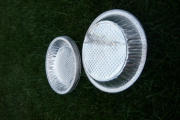
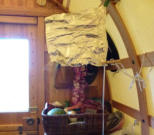
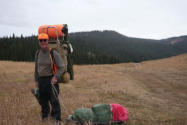
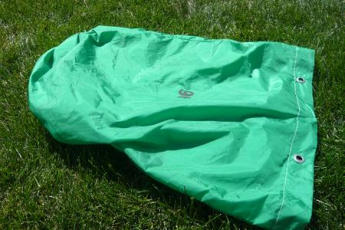
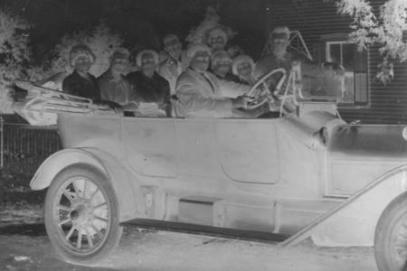
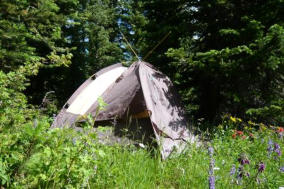
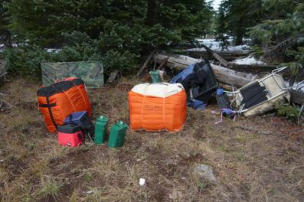




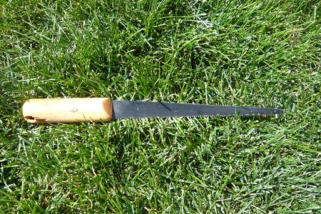
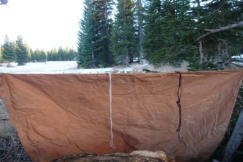
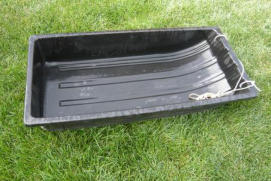
Tips to Make Elk Camp Easier, Safer and More
Hunt Successful




- Hunter welfare
- Hunter poster child
- Altitude sickness
- Hunter heart attacks
- Hunter heart stress
- Altitude sleep problems
- Hunter spine/bone damage
- Back country hazards
- Man made hazards
- Hunter bear attacks
- Bear problems
- Mtn lion Awareness
- Insect problems and diseases
- Hunt camp rodent problems
- Game meat dangers
- Elk meat diseases


Become Acclimated Before the Hunt: What are the best
thing you can do before going on a Colorado high-altitude
mountain hunt? Get your body physically in shape well
before the hunting season. Then come a few days early to
get used to the high altitude and less oxygen. Ask your
outfitter or guide to recommend places to stay. Nearly all
the 2012 second season clients at Trappers Lake Lodge and
cabins bagged an elk. I have to wonder if many of them had
arrived a few days early to relax, acclimate and soak in the
magnificent scenery. You will be more successful when
rested and adjusted. www.Trappperslake.com, email
info@trapperslake.com)
Busted Hands:Jim rode over with a personal problem – his hands. They were a wreck of honeycombed fissures, some bleeding. He had brought some simple hand lotion, but that was no match for the rough camp work, working in snow and the cold. His thumbs in particular were in trouble. Deep cracks formed where the nails met the fingertip flesh. (This is a common cold weather condition, especially for older people who have aging skin.) Two horsemen also came by. They got their elk and were taking a long trip to town for a shower and supplies. Like true sportsmen, they spent an hour scouring for thick, fragrance-free Eucerin hand cream I asked them to buy for Jim. They would not take payment, saying that they too had learned from the incident! In two days Jim’s hands were recovering. The photo shows some small tubes of essentials I recommend for remote cold weather hunting. The tiny tubes of super glue are to fill in the cuticle on the sides of thumbs, preferably before they desiccate and crack. Wiping your butt with snow, sitting long periods, or unfamiliar camp water and foods can irritate your posterior, for which the anti-itch triple ointment is a savior. Use chemically non-basic castile-based biosoap for hand AND DISH WASHING. I recommend Dr. Bronner’s “super mild 18-in-one baby castile, FRAGRANCE-FREE” soap. This soap is potassium based and dries skin less than sodium and lye based soaps. (Note the small bottle I’ve filled for convenience, and to carry in my day pack to clean up after a kill. The orange duct tape allows you to find it in the grass and snow.) Simple eye drops can ease eyes strained by squinting on bright days. The drops keep eyes moist at night and induce deeper sleep. Aquaphor is an unfragranced moisturizer ointment that allows lips to rejuvenate at night better than lip balm. Do not use camphor or scented lip balm; you cannot smell elk if your olfactory nerves are numbed or overwhelmed with chemicals or fragrances. The disposable shower cap keeps your hat and head dry if a wet snow occurs, or warm if a stiff wind blows though a knitted cap. Use Preconditioned Camp Gloves: . Bring a second pair of gloves to use only in camp. Wear them when doing camp chores, especially when setting up tents. Dirt and dust can quickly dry skin, especially if you are not a tradesman with work hardened thick skin. Buy reasonable quality leather gloves. Some inexpensive gloves have rough, coarse inner leather which leaches moisture from skin, or a cotton liner that stays wet long and the dampness will soften and leach natural oils from your hands. Both exacerbate hand chapping. Use some nonfragrant hand lotion on finger tips and palms prior to using new gloves to reduce the leather drying effects on hand skin. Don’t Wash Pots, Pans and Dishes: We initially used a Svea spirit stove set and sometimes got lazy after dinner. The pots got only sloshed out, put in the cold and reused the next day. That ended when acidic spaghetti sauce etched pin holes through the expensive pure aluminum pots. With insight we improvised to make dish washing obsolete.Thin disposable aluminum pie plates and cake pans proved to be a weary hunter’s godsend. They weigh almost nothing, nestle together for transport, can be used for cooking or as a serving plate. One plate can be used as a lid. Now only one pot is needed to make hot coffee and tea water. Eat right from the pie plate.Hold a wool cap under the plate to keep food warm longer. Warm the plates on the stove after dinner to dry them, then stack them for transport out (horrors – do not leave never-decay aluminum wonders in the backcountry). We pick up stacks of these plates at spring garage sales for pennies to use when hunting, in our antelope hunting cabin, and in our rambling sheep camp wagon.Use paper hot cups for soup, coffee and instant oatmeal breakfasts. Leave them separated to dry under the tent fly. Burn them. Days End Wash Up: Bring a flexible rectangular polypropylene wash tub with a snap-on cover that will fit in your backpack. Do not use polystyrene, because it will crack in the cold. Pack your delicate things in the tub. The tub will provide a quick, refreshing face wash in the evening. Getting rid of the sweat salt greatly increases the likelihood of a good night's sleep. Garbage Bag Water Heater: Keeping water unfrozen is a problem. It is impossible to get frozen water out of jerry cans and bottles. Bring a couple of black 33 gallon garbage bags. Place water containers in one bag in a place where noon to afternoon sun will shine on it. Crumple the second bag and place inside the first bag on the eastern side of the water containers to act as an afternoon heat loss insulator. Lighty tie off the bag top. This solar heating will prevent or reduce freezing of the water. Tent Doormats: An extra polyesther towel inside the tent door is a good way to keep the tent dry and clean of mud. Place boots on it to catch dripping water. Gather pine cones to place outside the tent door. These will prevent a quagmire from forming at the heavily used tent entry. Do not use pine branches; it is illegal in National Forests. A Drag and Comfort Bag: A coated nylon bag large enough to hold a bull hindquarter can be used to drag quarters out of a field, or even along the trail home. Mine has been used by volunteer horsemen to drag game to the trail head for me. We've also tied the bag in the center so volunteer horse people can drape the bag over the saddle horn.Turn the bag inside out for snow travel; the coating eases sliding and prevents icing up. It makes a great garbage transport container at the end of the hunt. Carry the bag in your day pack. The bag can be used for creature comfort. Sit on it to prevent your butt from getting wet. Place it over your legs for warmth, or to deflect drops from dripping branches. Put your booted legs into it as a chill reducer when you sit, especially when the wind kicks up at dawn or dusk. (I make our bags, but include a photo of a Post Office surplus mail bag purchased at a garage sale for a dollar.) A drag bag can also be used to hang your hunting clothin g outside at night so the cooking and tent interior fumes will not saturate them. Sprawling on it at lunch time prevents your clothing from getting full of stickers, pine needles and grass stubs. Leave your boots in the bag outside the tent to avoid snow from blowing into them, and the snow-covered boots from melting in the tent. Get caught in a rain, and you can keep your pack and gun dry with the bag. If bears become a problem, the bag can be hoisted up on a tree branch and keep food dry. Lay butchering instruments on the bag beside the kill to avoid loosing them in the grass or snow. A coated, scent-free bag can may be accepted by a horseman volunteers to take your garbage out to your vehicle; it can be tied at the end and in the middle so it can be draped over a saddle horn. Horsemen with pack animals are more likely to offer to take out a heavy hind quarter if it is in a sealed bag that will not gore-soil their panniers. Trade the bag with another hunter who is less prepared for something you need. Lastly, leaving a remote camp in a hurry in bad weather usually involves finding a lot of miscellaneous small items at the last moment. Dump them in the bag and they will not get lost. I also use my drag bag as an easily erected blind. Shoe strings sewn to the sides permit me to hang it from a roppe or log. Place a long pole or pine cones in it to prevent breezes from moving the blind. Plan your back country exit. The tent was abandoned and this is what it looked like the next summer. No bears, just snow loads devastated the supply tent. Normally, I would have burned the garage sale supply tent, plastic milk jugs and foam pads and brought out the remaining melted glob and poles. However, the wet tent unburnable without using fuel. Fuel burning was inadviseable because of the pre-storm winds. The increasing snow storm urged little tardiness in leaving before I was the last person remaining in the wilderness. Consider a Pannier Sized Transport Bag: I've made some large transport bags now that I use for outfitter horse Sherpa Service. The bags allow me to compactly pack small items to save space, and to protect fragile items.The bags slip down into standard horse panniers. This expedites loading and greatly decreases wranglers exasperation. But the most important asset is that the bags eliminate cargo shifting and the loss of small items along the trail. (Lost a sleeping pad that way years ago.) The two equal sized bags I constructed have a finished size of: Width 26 inches, depth 14 inches, and height of 16 inches. They are made of heavy waterproofed (inside coating) Cordova nylon cloth with heavy duty zippers. Seams and sewing threads are sealed with tent seam sealer. Hand holds are on each end, there is a snap buckle strap around the bag (for outfitter weighing to load balance), and I cinch the bags with rope to keep them compac and prevent the contents from shifting. I place sleeping pads and other soft items against the back This prevents irritation to the pack horses, which might end in a bucking match. Note that the bag tops are different colors to avoid confusion of contents. Help from Horsemen: Over the years, we have been helped many times by mounted hunters. A secret to this help is to make it easy, safe, convenient and timely for them to help. We come prepared with a FEW heavy items prepacked in T- shirt-padded small stuff sacks. If a horseman offers to take some things up the trail, it is ready to be tied around a saddle horn. Don't expect a fellow to stop riding while you pack a bag. And never ask him to take your leaky fuel bottles (they leak as the rider gains altitude) or other smelly things. Volunteers don't want to ruin their hunt or equipment. We clearly tell the volunteer to just drop it from his horse or tie it on a tree at a clearly communicated trailside location. We have also had small but heavy meat carried out by horses, and sometimes whole quarters. Again, the meat is already blood-drained, packed, in blood-proof bags, and packed ready to go. The bones should not point inward to irritate or injure the horse. And you should have enough rope to tie on the meat. Give and you might receive help: There is another side to inducing horse people to help you. You give something first! That could be valid hunting information, location of good water or ample water for horses, and scouting tips are favorites. Naturally, we do not disclose our exact hunting sites. However, other areas we ramble around while scouting can be disclosed, especially if they can be accurately described so the hunter can find them.. Our favorite "gift" was an air photograph with the main trails marked. We would use a safety pin to prick holes where game was seen or recently taken. Nylon stuff sacks were another trade item. Use your imagination, and be polite and diplomatic. Most people want to help you if it does not cost them a lot of bother and time, or their successful hunt. Radio Help: Much of the Flat Tops Wilderness and other Colorado backcountry locations receive poor radio reception, if any. Reception worsens during storms. The stations likely to give insights into oncoming weather may be distant and poorly received. Remember, if you hunt until dark, the local stations may be on automatic program music streaming without hourly weather reports when you get back to camp. They will not have weather forecasts until morning. You can increase your radio reception by making an aluminum foil "flag" on the antenna or a supplemental wire antenna extension strung within your tent. (Yes Dad, I know it is an old trick, but the post- Drink Hot Gaterade: Traipsing the high country can leave you worn out and not up to day's end camp chores. Try some HOT Gaterade when you return to camp. The quickly absorbed electrolytes and sugar can almost instantly perk you up. Get Old Betsy Ready for Hunting Hunting is not going to be very successful nor enjoyable if you arrive late, exhausted or not at all. By August you should have given your huntmobile an exhaustive inspection. Churning up mountain roads and busting snow in low gears will tax your cooling system. Replace your old thermostat and any soft water AND heater hoses. Does the heater work? Defroster? Clean the radiator internally, and externally of summers bugs. Do you have a pre-radiator gravel guard screen (mounted in front (not against)) the radiator? Check the differential and transmission fluids. Replace sun rotted wiper blades. Check the spare tire inflation pressure. Do you have good chains that fit your new (larger?) tires. Chain replacement links/ cross links? Have a bow saw? There have been times when wind toppled trees blocked entry roads - or worse yet, exit roads. Busted Tires: Some of the dirt and gravel roads are really hard on tires, especially if you drive fast. Washboarding can delaminate tires, and punctures are frequent, especially on lightly strutted bouncing trailers. Bring two spare trailer wheels/tires. Also bring a 12 volt tire air compressor. Keep the compressor inside the truck cab/vehicle. A cold compressor's piston rubber rings may contract and compression may be bad. I recommend you convert a cigarette lighter power cord to a battery terminal cord. Compressors draw heavy amperage which may blow many fuses, perhaps more than you have. Over heating the cigarette wiring may also cause adjacent wiring insulation to melt and cause real problems. . Bring FRESH tire plugs and a SEALED new tube of rubber cement. Cold tires are hard to plug and seal without the rubber cement as lubrication. Note: the self-sealing "slime" type air inflation canisters may not work in very cold weather.The propellant may not expand enough to inflate high-pressure truck tires. Candles for Tent and Sleeping Comfort:Burn a candle or two in a safe place at night to keep warmer. The candles do not provide much heat, but they will provide air circulation. Circulation is very important to redistribute water vapor away from your sleeping bag. Humans can perspire a pint to a quart of water over night. This water must travel through your sleeping bag and must be removed from the tent atmosphere. A moisture-saturated sleeping bag and perspiration laden clothing will make you feel much colder than if you were dry. Air circulation created by a candle is upward. Moisture is wafted up and condenses on the tent ceiling (or travels through an inner breathing tent to the rainfly). This lowers the humidity inside the tent. Condensation on your sleeping bag is reduced. You will feel warmer if the air is drier.This is a photograph of the Emerald Room in Quebec, Canada's famo us Hotel de Glace (Hotel of Ice). The hotel, furniture and all contents are made of ice and ice-snow. The 45 rooms are "heated" with two candles per room. This is wonderfully comfortable with the arctic provided arctic sleeping bag. Sleeping here is a "hoot" and a refuge from the subzero outside weather. Don't Bring a Snow Shovel, but A Plastic Tray or Aluminum Pizza Pan: Getting out of the sack on a snowy windy night to clear snow from the tent can be hazardous to your tent if you use a snow shovel. A shovel has corners which can snag the canvas and rip it. They also hang up on tent guy lines. Tent damage is not wanted, especially when the wind howls. A FLEXABLE rounded tray held by a gloved hand is more controllable and won't rip the tent. It can fling a lot of snow in a short time, since you will not have to fiddle trying to be careful with the tent. The tray can be used to hold meals, hot pans (on a hat or rag), or as a night time depository of all the stuff in your pockets. And trays have no handles like shovels and are easy to pack. You might have to pay all of a dollar for one at a Goodwill store. Bring a Plastic Sled, Save a Back and Make Life Easier Pictured are four plastic sleds. You find them at June garage sales for a couple of dollars. They can be a wonderful elk camp asset. Sleds do the job of moving things without lifting. You might be surprised at the incidence of hunter back and heart problems. Sleds can be used to haul in/out camp, dragging game quarters to shady hanging trees, sitting in at muddy camp sites, as a wind break for stoves, and escaping the back country after a blizzard. They serve as a night time weather cover for back packs, to stand in when changing clothing and even as a sitz bath for bathing. The best use is for hauling water. I can drag home a week's water (ten gallons) in the square sled from a spring and never have interrupt hunting and to do that chore again. The blue one is too shallow and rigid; it does not flex over trail rocks and it tips over. The long upper black sled is ideal for long hauls on trails; I've used two tied in tandem. My favorite is the square one. It acts as a rain and night time cover to my outside stored equipment. It can be strapped over my pack where it does not become a flappng nuisance in the wind. Homemade Bone Saws May Be Best I have several commercial bone saws. They develop/ get loose joints and they are heavy for backpack remote hunting. That is why I always revert to an inexpensive homemade very light saw. The saw is made from a section of broom handle and a sheet rock keyhole replacement saw blade (get at hardware stores). I make a saw cut longitudinally in the broom stick held in a vise. Then I drill and countersink holes in the wood where there are holes in the blade. The blade is then "five minute epoxied" into the slot and flat headed bolts/nuts inserted and coated with epoxy. The but end of the handle is sawed off and sanded to a comfortable roundness. I either make a leather scabbard from an old leather pocketbook, or simply roll it in a couple of handy plastic bags with rubber bands (which I use to better hold up my field dressing gloves on my arms.) When the saw dulls, I make another. Reserve One Proper,Sharp Knife for Only Skinning. Use a camp knife for chores and keep the skinning knife for only that purpose. Do not let other comrades use it either! There are two reasons you want a sharp skinning knife. Skinning a large animal like a deer or elk with a razor sharp knife is almost a lark when done while the animal is still warm. That reason is ease. Next is meat quality. Using a dull or improper knife will result in more nicks through the hide (hair and hair musky scent on carcass), and the through the animal’s silver ( a natural bacteria invasion barrier to the meat). Many knife makers tout serrated blades. I find they clog with the tallow below the hide, increase friction and blade cleaning frustration, and drag hair onto the animal. Many of them also are made with sharp points which are not ideal for peeling back hike; use a rounded point. Skin Game Win a Rock: It is easiest and best (meat quality) to skin an animal when it is still very warm. Cool or cold animals have the hides stiff and the sub-hide tissues become rigid, essentially gluing the hide on the carcass. Your prized hide will receive more nicks and perhaps be damaged beyond taxidermy quality. However, warm hides are very slippery, especially after eviscerating and when using field dressing gloves. Pick up a palm sized rock as you walk toward your kill. Roll the rock into the leading hide edge to get a firm, relaxed, non-tiring grip. You will be able to pull hard and release the hide from the carcass. You can slip off the hide by just easily slashing the still soft minor connective tissues with short arcuate strikes. Your freezer: A Must for a Serious Hunter Novice hunters can easily “get the bug”, especially if their game meat was treated well to be appreciated by family and friends. In my book I relate the science behind meat qualities (tenderness, sweetness, sanitation, preservation) benefits gained from a quick kill, proper field dressing, good butchering, and ideal meat storage. It is mid June 2014. I smoked a 2010 bull elk fillet without any spices. The three and a half year old fillet was perfectly fresh – no freezer burn or gamey taste, just sweet and butter knife tender meat. We recently ate (without spices) a freezer bottom orphan antelope roast. Although it was nearly five years old, it tasted fresh and had an excellent aroma and taste. Meat should be kept at a constant 0 – 3 F temperature. Refrigerator freezers have changing temperatures during the defrost cycles, and this reduces the meat quality. Upright freezers can also have varying temperatures if they are less than full; every time the door opens the cold air drops out and moist warm air enters. The doors may also be left ajar. Buy a new energy efficient chest freezer rather than settling for an older castoff. The new freezers use smaller compressors which run most of the time. This keeps the temperature constant. Large compressors cycle as the thermostat turns them on. This causes freezer temperature oscillation. Our Made in USA Sears chest freezer temperature does not vary one degree. Lastly, buy a good size freezer. A small freezer becomes disorganized as you rut through it and it becomes hard to find things. That activity does not do a lot for the meat wrapper’s air-tight integrity. 
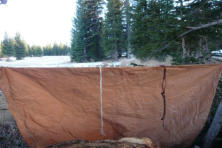





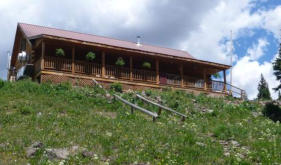
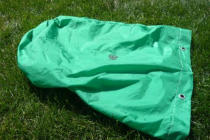

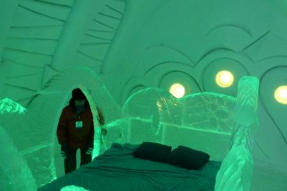




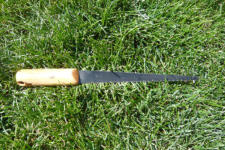
Elk
Camp
Tips
to
Make
Remote
Elk
Camps
Easier,
Safer
and
More
Productive

© 2016 -2021 Copyright by P. K. H. Groth, Denver, Colorado, USA All rights reserved -
See contact page for for permission to republish article excerpts.

© 2016 -2021 Copyright by P. K. H. Groth, Denver, Colorado, USA All rights reserved -
See contact page for for permission to republish article excerpts.


- Hunter welfare
- Hunter poster child
- Altitude sicknesses
- Hunter heart attack
- Hunter heart stress
- Altitude sleep problems
- Hunter spine and bone injuries
- Back country hazards
- Man caused hazards
- Bear attacks
- Bear camp problems
- Mountain. lion awareness
- Insect diseases and problems
- Camp rodent problems
- Game meat dangers
- Elk diseases

























